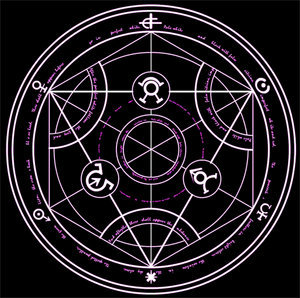
Aysur News: Two large moons, Arvuna and Alahya, are now life-bearing, habitable, colonized worlds.
Aysur
Overall fame/aspect title: Dranen's two ocean/garden moons.
Abstract; summation of all major producing planets within this system:
Arvuna (virtually countless), Alahya (virtually countless), Alformus (helium-3), Shir (gold and cobalt).
Overall fame/aspect title: Dranen's two ocean/garden moons.
Abstract; summation of all major producing planets within this system:
Arvuna (virtually countless), Alahya (virtually countless), Alformus (helium-3), Shir (gold and cobalt).

System: Aysur

Solar System Collectives
Hierarchically Descending
---[Star Data]---
Stellar ID:
Class:
Radius:
Mass:
Luminosity:
Temperature:
Distance:
---[Planets]---
6
---[Moons]---
45
---[Asteroid Belts]---
1: (unnamed)
---[Planetoids]---
###,###+
---[Comets]---
#,###+
Stellar ID:
Class:
Radius:
Mass:
Luminosity:
Temperature:
Distance:
---[Planets]---
6
---[Moons]---
45
---[Asteroid Belts]---
1: (unnamed)
---[Planetoids]---
###,###+
---[Comets]---
#,###+
_
G#
(N/A) #.# sol
0.98 sol
(N/A) ## sol
##,### °K (##,### °F)
# AU
Aysur (year) A
A
4,834 km
0.285 Earth Masses
0.953
N/A
684 °C / 1,263.2 °F
0.5 g
86.87 atm
0.7 AU
0.6 Earth Years
61.1 Earth Hours
No; N/A
No; N/A
---[Planet Data]---
Stellar ID:
Class:
Radius:
Mass:
Keplerian Ratio:
Stellar ID:
Class:
Radius:
Mass:
Keplerian Ratio:
Luminosity:
Surface Temperature:
Day Length:Surface Temperature:
Surface Gravity:
Atmospheric Pressure:
Atmospheric Pressure:
Orbital Distance:
Orbital Period:
Orbital Period:
---[Status]---
Colonized:
Terraformed:
---[Moons]---
0
---[Rings]---
0
---[Artificial Satellites]---
0
---[Indigenous]---
N/A
Colonized:
Terraformed:
---[Moons]---
0
---[Rings]---
0
---[Artificial Satellites]---
0
---[Indigenous]---
N/A
Aysur (year) B
K
1,454 km
0.005 Earth Masses
0.949
N/A
23 °C / 73.4 °F
0.1 g
0.34 atm
1.4 AU
1.7 Earth Years
37.4 Earth Hours
Yes; year
No; N/A
---[Planet Data]---
Stellar ID:
Class:
Radius:
Mass:
Keplerian Ratio:
Stellar ID:
Class:
Radius:
Mass:
Keplerian Ratio:
Luminosity:
Surface Temperature:
Day Length:Surface Temperature:
Surface Gravity:
Atmospheric Pressure:
Atmospheric Pressure:
Orbital Distance:
Orbital Period:
Orbital Period:
---[Status]---
Colonized:
Terraformed:
---[Moons]---
0
---[Rings]---
0
---[Artificial Satellites]---
0
---[Indigenous]---
N/A
Colonized:
Terraformed:
---[Moons]---
0
---[Rings]---
0
---[Artificial Satellites]---
0
---[Indigenous]---
N/A
Aysur (year) C
I
72,021 km
(N/A) #.### Earth Masses
0.977
N/A
(N/A) # °C
(N/A) #.# g
1.94 atm
2.5 AU
4.0 Earth Years
17.1 Earth Hours
Yes; year
No; N/A
---[Planet Data]---
Stellar ID:
Class:
Radius:
Mass:
Keplerian Ratio:
Stellar ID:
Class:
Radius:
Mass:
Keplerian Ratio:
Luminosity:
Surface Temperature:
Day Length:Surface Temperature:
Surface Gravity:
Atmospheric Pressure:
Atmospheric Pressure:
Orbital Distance:
Orbital Period:
Orbital Period:
---[Status]---
Colonized:
Terraformed:
---[Moons]---
44: Arvuna (life-bearing, colonized), Alahya (being terraformed)
---[Rings]---
0
---[Artificial Satellites]---
0
---[Indigenous]---
N/A
Colonized:
Terraformed:
---[Moons]---
44: Arvuna (life-bearing, colonized), Alahya (being terraformed)
---[Rings]---
0
---[Artificial Satellites]---
0
---[Indigenous]---
N/A
---[Planet Data]---
Stellar ID:
Class:
Radius:
Mass:
Keplerian Ratio:
Stellar ID:
Class:
Radius:
Mass:
Keplerian Ratio:
Luminosity:
Surface Temperature:
Day Length:Surface Temperature:
Surface Gravity:
Atmospheric Pressure:
Atmospheric Pressure:
Orbital Distance:
Orbital Period:
Orbital Period:
---[Status]---
Colonized:
Terraformed:
---[Moons]---
0
---[Rings]---
0
---[Artificial Satellites]---
0
---[Indigenous]---
N/A
Colonized:
Terraformed:
---[Moons]---
0
---[Rings]---
0
---[Artificial Satellites]---
0
---[Indigenous]---
N/A
Yes; year
No; N/A
Aysur (year) D
I
67,626 km
(N/A) #.### Earth Masses
0.994
N/A
(N/A) # °C
(N/A) #.# g
1.81 atm
10.1 AU
32.2 Earth Years
8.8 Earth Hours
Aysur (year) E
K
4,900 km
0.41 Earth Masses
0.994
N/A
-185 °C / -301 °F
0.7 g
(N/A) #.# atm
20.0 AU
89.7 Earth Years
31.0 Earth Hours
Yes; year
No; N/A
---[Planet Data]---
Stellar ID:
Class:
Radius:
Mass:
Keplerian Ratio:
Stellar ID:
Class:
Radius:
Mass:
Keplerian Ratio:
Luminosity:
Surface Temperature:
Day Length:Surface Temperature:
Surface Gravity:
Atmospheric Pressure:
Atmospheric Pressure:
Orbital Distance:
Orbital Period:
Orbital Period:
---[Status]---
Colonized:
Terraformed:
---[Moons]---
0
---[Rings]---
0
---[Artificial Satellites]---
0
---[Indigenous]---
N/A
Colonized:
Terraformed:
---[Moons]---
0
---[Rings]---
0
---[Artificial Satellites]---
0
---[Indigenous]---
N/A





Note
Shasu is a dwarf planet that is believed to have been ejected from Agnin during a giant impact with another planet-sized body. At the time, Agnin had a magma ocean covering much of its surface, and the liquid rock sprayed into space, where it coalesced and cooled over millions of years. The theory is that during the cooling Shasu first orbited Agnin but was eventually pulled from that orbit by the gravity wells of other planets, primarily Dranen.
Today Shasu is relatively temperate, with a light hydrogen-helium atmosphere attracting ‘spacers’ (Space-farers) who use its atmosphere to refuel. Its crust composition is similar to Agnin, as is evident in its high sulfur content.
Shasu is a dwarf planet that is believed to have been ejected from Agnin during a giant impact with another planet-sized body. At the time, Agnin had a magma ocean covering much of its surface, and the liquid rock sprayed into space, where it coalesced and cooled over millions of years. The theory is that during the cooling Shasu first orbited Agnin but was eventually pulled from that orbit by the gravity wells of other planets, primarily Dranen.
Today Shasu is relatively temperate, with a light hydrogen-helium atmosphere attracting ‘spacers’ (Space-farers) who use its atmosphere to refuel. Its crust composition is similar to Agnin, as is evident in its high sulfur content.
Note
A sizable hydrogen-nitrogen gas giant just on the far side of its pale yellow star's "frost line", Dranen is known for its spectacular storms. At least three persistent observable "spots" – actually cyclonic and anti-cyclonic storms – have lasted for over 544 years, significantly longer than Jupiter's Great Red Spot. The largest of these spots, the Ishna, has consistently held a diameter over three times that of Earth.
Dranen has 44 moons. Two of them are of special interest to the Citadel Committee on Habitable Worlds. The first, Arvuna, is a life-bearing world that has already been colonized. The second, Alahya, is slowly being terraformed to receive a population.
A sizable hydrogen-nitrogen gas giant just on the far side of its pale yellow star's "frost line", Dranen is known for its spectacular storms. At least three persistent observable "spots" – actually cyclonic and anti-cyclonic storms – have lasted for over 544 years, significantly longer than Jupiter's Great Red Spot. The largest of these spots, the Ishna, has consistently held a diameter over three times that of Earth.
Dranen has 44 moons. Two of them are of special interest to the Citadel Committee on Habitable Worlds. The first, Arvuna, is a life-bearing world that has already been colonized. The second, Alahya, is slowly being terraformed to receive a population.
Note
A hydrogen-helium gas giant, Alformus had its helium-3 refueling stations destroyed in an attack by Grow Zero, an anti-population terrorist group that wanted no more immigration to Arvuna. A consortium of Arvuna-based corporations is currently rebuilding the stations.
ALLIANCE ADVISORY: Alformus is not considered vital to the stability of the Aysur system. Civilians working on the helium-3 platforms should not expect Alliance military intervention in case of kidnapping or other violence.
A hydrogen-helium gas giant, Alformus had its helium-3 refueling stations destroyed in an attack by Grow Zero, an anti-population terrorist group that wanted no more immigration to Arvuna. A consortium of Arvuna-based corporations is currently rebuilding the stations.
ALLIANCE ADVISORY: Alformus is not considered vital to the stability of the Aysur system. Civilians working on the helium-3 platforms should not expect Alliance military intervention in case of kidnapping or other violence.
Note
A remote rock planet capped in ice, Shir has been exploited by Arvunan corporations for its minerals. Home to gold ore, which is used in spaceship shielding as well as jewelry, and to cobalt deposits used in high-tensile alloys. Shir shows no signs of being exhausted anytime soon. A light gravity helps keep the planetary exploration process cheap.
A remote rock planet capped in ice, Shir has been exploited by Arvunan corporations for its minerals. Home to gold ore, which is used in spaceship shielding as well as jewelry, and to cobalt deposits used in high-tensile alloys. Shir shows no signs of being exhausted anytime soon. A light gravity helps keep the planetary exploration process cheap.
Note
A hothouse planet, Agnin has scorching clouds of methane and sulfur dioxide that give the planet a pale green color in visible light. The SO2 from volcanic activity rains down as sulfuric acid in the upper atmosphere, but this is boiled away before the liquid ever reaches the surface. Agnin's harsh environment has prevented exploration by anything except probes.
A hothouse planet, Agnin has scorching clouds of methane and sulfur dioxide that give the planet a pale green color in visible light. The SO2 from volcanic activity rains down as sulfuric acid in the upper atmosphere, but this is boiled away before the liquid ever reaches the surface. Agnin's harsh environment has prevented exploration by anything except probes.
Major Regions
Continents
Continent
Cities
Oceans
Ocean
Cities
Continent
Cities
Oceans
Ocean
Cities
D = Destroyed / ruins
Albums
Photos
x
x
Videos
x
x
x
x
Videos
x
x
C = Classified
Major Regions
Continents
Continent
Cities
Oceans
Ocean
Cities
Continent
Cities
Oceans
Ocean
Cities
D = Destroyed / ruins
Albums
Photos
x
x
Videos
x
x
x
x
Videos
x
x
C = Classified
Albums
Photos
x
x
Videos
x
x
x
x
Videos
x
x
C = Classified
Major Regions
Continents
Continent
Cities
Oceans
Ocean
Cities
Continent
Cities
Oceans
Ocean
Cities
D = Destroyed / ruins
Major Regions
Continents
Continent
Cities
Oceans
Ocean
Cities
Continent
Cities
Oceans
Ocean
Cities
D = Destroyed / ruins
Albums
Photos
x
x
Videos
x
x
x
x
Videos
x
x
C = Classified
Albums
Photos
x
x
Videos
x
x
x
x
Videos
x
x
C = Classified
Major Regions
Continents
Continent
Cities
Oceans
Ocean
Cities
Continent
Cities
Oceans
Ocean
Cities
D = Destroyed / ruins

---[Planet Data]---
Stellar ID:
Class:
Radius:
Mass:
Keplerian Ratio:
Stellar ID:
Class:
Radius:
Mass:
Keplerian Ratio:
Luminosity:
Surface Temperature:
Day Length:Surface Temperature:
Surface Gravity:
Atmospheric Pressure:
Atmospheric Pressure:
Orbital Distance:
Orbital Period:
Orbital Period:
---[Status]---
Colonized:
Terraformed:
---[Moons]---
0
---[Rings]---
0
---[Artificial Satellites]---
0
---[Indigenous]---
N/A
Colonized:
Terraformed:
---[Moons]---
0
---[Rings]---
0
---[Artificial Satellites]---
0
---[Indigenous]---
N/A
Aysur (year) F
C
3,354 km
0.055 Earth Masses
#.##
N/A
-216 °C / -356.8 °F
0.2 g
(N/A) #.# atm
42.2 AU
275.1 Earth Years
64.8 Earth Hours
Yes; year
No; N/A

Major Regions
Continents
Continent
Cities
Oceans
Ocean
Cities
Continent
Cities
Oceans
Ocean
Cities
D = Destroyed / ruins
Albums
Photos
x
x
Videos
x
x
x
x
Videos
x
x
C = Classified
Note
The outermost planet of the Aysur system, Tamgauta is remote and largely unexplored. Its carbon dioxide atmosphere has long since frozen into fields of dry ice.
The outermost planet of the Aysur system, Tamgauta is remote and largely unexplored. Its carbon dioxide atmosphere has long since frozen into fields of dry ice.
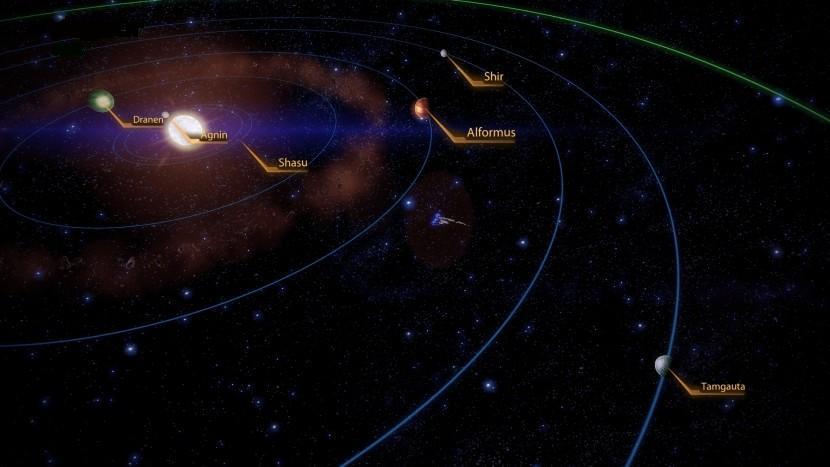
Stellar Mass:
Stellar Class:
Luminosity:
Planets:
Moons:
Asteroid Belts:
Asteroids:
Additional Objects:
0.98 M☉
G
N/A
6
45
1
1
0
Agnin
哎萬年
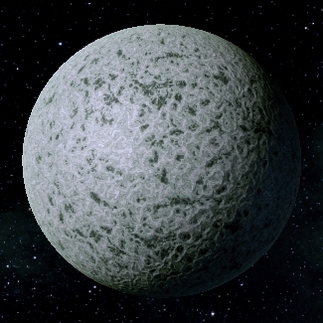

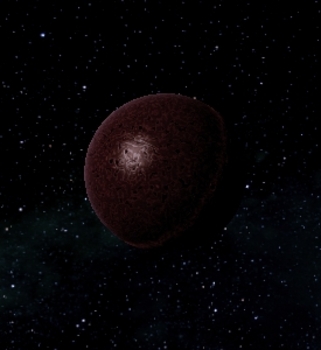
沙蘇
Shasu
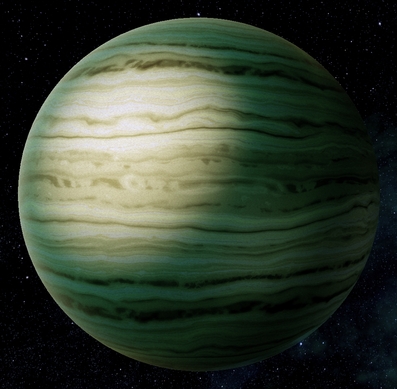
醫生一恩
Dranen
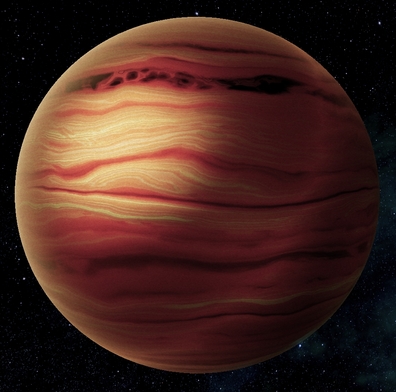
我們基地的形式
Alformus
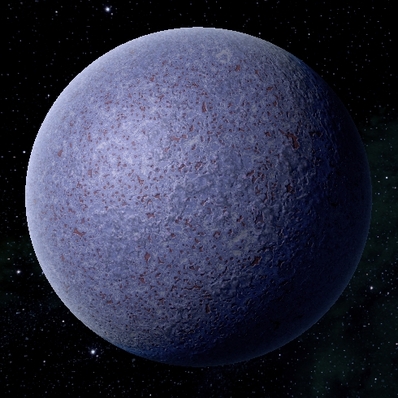
事兒
Shir
Tamgauta
譚高銘達
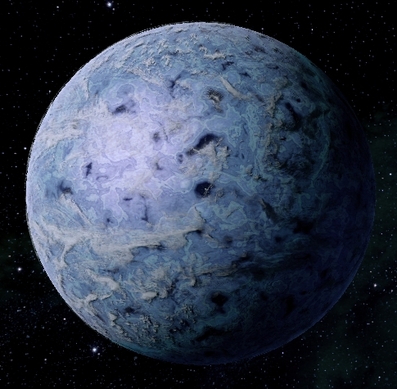
系統
Note
Aysur is a large system with six planets, one moon and an asteroid belt.
Aysur is a large system with six planets, one moon and an asteroid belt.
---[Moon Data]---
Stellar ID:
Class:
Radius:
Mass:
Keplerian Ratio:
Stellar ID:
Class:
Radius:
Mass:
Keplerian Ratio:
Luminosity:
Surface Temperature:
Day Length:Surface Temperature:
Surface Gravity:
Atmospheric Pressure:
Atmospheric Pressure:
Orbital Distance:
Orbital Period:
Orbital Period:
---[Status]---
Colonized:
Terraformed:
---[Moons]---
0
---[Rings]---
0
---[Artificial Satellites]---
0
---[Indigenous]---
Humans
Colonized:
Terraformed:
---[Moons]---
0
---[Rings]---
0
---[Artificial Satellites]---
0
---[Indigenous]---
Humans
Aysur (year) C1
O
6,448 km
1.116 Earth Masses
#.##
N/A
1 °C / 33.8 °F
1.1 g
1.45 atm
(N/A) #.# AU
66.0 Earth Days
29.2 Earth Days
Yes; year
Yes; year

Major Regions
Continents
Continent
Cities
Oceans
Ocean
Cities
Continent
Cities
Oceans
Ocean
Cities
D = Destroyed / ruins
Albums
Photos
x
x
Videos
x
x
x
x
Videos
x
x
C = Classified
Note
Arvuna, a moon of Dranen, is classified as a water world because oceans or ice cover 90% of its surface. Besides prodigious sea life, Arvuna is home to a host of venomous arthropodal pests in the tropical zone with metallic carapaces similar to those found on Palaven to resist radiation coming from Dranen's magnetosphere. There are several well-shielded human colonies on Arvuna, although they are alienated from the Council and politically insignificant to the Traverse and Terminus Systems.
The Reapers have yet to reach Arvuna, concentrating instead on the Balor system. While this cuts Arvuna off from the cluster's mass relay, it is at least some evidence that the Reapers cannot be everywhere at once.
Arvuna, a moon of Dranen, is classified as a water world because oceans or ice cover 90% of its surface. Besides prodigious sea life, Arvuna is home to a host of venomous arthropodal pests in the tropical zone with metallic carapaces similar to those found on Palaven to resist radiation coming from Dranen's magnetosphere. There are several well-shielded human colonies on Arvuna, although they are alienated from the Council and politically insignificant to the Traverse and Terminus Systems.
The Reapers have yet to reach Arvuna, concentrating instead on the Balor system. While this cuts Arvuna off from the cluster's mass relay, it is at least some evidence that the Reapers cannot be everywhere at once.
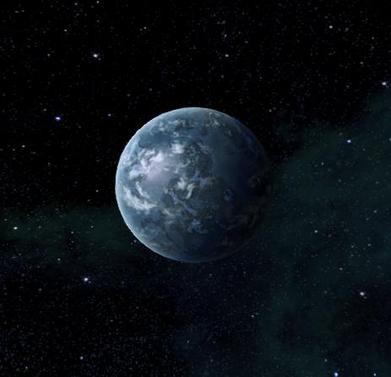
Arvuna
不是似曾相識
